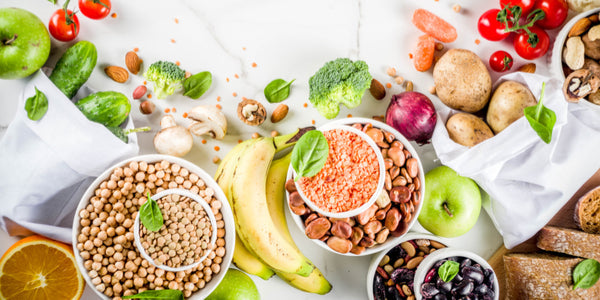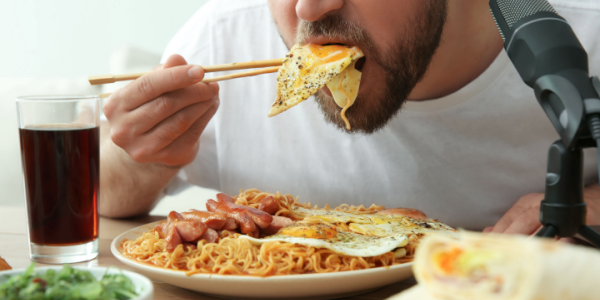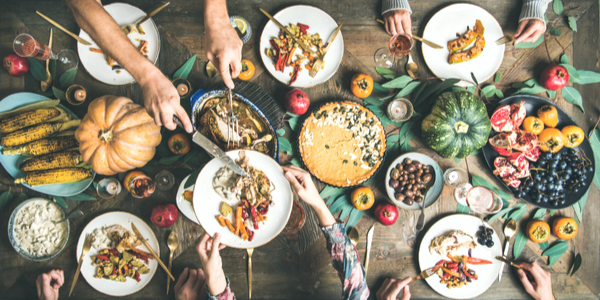
A low-glycemic diet is based on choosing foods low on the glycemic index (GI). Incorporating more of these low-GI foods is valuable for those watching blood sugars. Particularly when pairing with adequate protein, there is a favorable link between the glycemic index and weight loss.
But the glycemic index may not tell the entire food story regarding the impact on overall health. Another measure, also known as the satiety index, also helps identify the best hunger-fighting foods.
Find out the differences between these indexes and how using them can lead to sound nutrition choices.
What Is the Glycemic Index?
The glycemic index is like a carbohydrate meter, measuring how a carb-containing food impacts and raises blood glucose levels. The GI measures and ranks foods based on their immediate effect on blood sugar levels.
A number scale from 0 to 100 ranks how fast carbohydrate in food turns into sugar in the human body. Glucose, a simple, very quickly digested sugar, is used as the "index" or standard and assigned a base value of 100. The index is broken down in low, medium, and high GI's:
• Low GI: Less than 55
• Medium GI: 56 to 69
• High GI: More than 70
Highly processed carbohydrate foods that break down quickly during digestion end up with the highest rankings. Plant-based proteins and high-fiber complex carbs tend to rank low. And generally speaking, when it comes to identifying healthy, hunger-abating foods, low GI is good.
The glycemic index is a useful measurement, especially for people with diabetes, to gauge how food choices influence blood sugars. Equally, those wanting to lose weight or improve overall health can benefit from including more low-GI foods in the diet.
Again, glucose is used as the "index." And like glucose, high-GI foods are shown to digest rapidly and spike blood sugar. Such products are often made with refined sugars and flours.
Ultimately, highly processed foods, especially carbs, digested quickly end up with the highest rankings.
Medium to High-Glycemic Foods (GI greater than 56)
• Grapes (59)
• Honey (61)
• Banana, ripe (62)
• Sweet potato (70)
• White rice (73)
• Pretzels (83)
• White baguette (95)
• Baked russet potato (111)
On the other hand, the lower the glycemic index, the lower the risk of high blood sugars. Lower blood sugar fluctuations result from the relatively slower digestion speed of low-GI foods. High-protein foods and high-fiber complex carbohydrates tend to rank low.
Low-Glycemic Foods (GI less than 55)
• Grapefruit (25)
• Kidney beans (29)
• Carrot (35)
• Apple (39)
• 100% whole grain bread (51)
• Quinoa (53)
Generally speaking, foods with a higher glycemic index tend to be devoid of high nutritional value. This is because they are often stripped down from the fiber, mineral, and vitamin content. Lower glycemic foods tend to supply more nutrients, including fiber, while likewise increasing feelings of fullness.
However, another tool may better indicate how well a food can regulate hunger. This is known as the satiety index.
Satiety Index
The satiety index was based on research produced at the University of Sydney. Susanna Holt, PhD, lead a team of researchers to measure different foods' ability to produce satiety and fend off hunger.
To develop the satiety index, college students were invited for a "breakfast" which consisted of 240 calories worth of various foods. After eating, the students were asked to rank their feelings of hunger every 15 minutes for the next two hours. They could also continue to eat more of that particular food, but nothing else.
In the satiety index of common foods, a slice of white bread is the index was assigned a value of 100. The satiety value of other foods is rated relative to the bread, with foods offering longer-lasting hunger abatement scoring higher.
Foods scoring higher than 100 were considered more filling, while scoring lower than 100 were considered less filling. The satiety index list included some of the following 38 different foods, with the most high satiety foods listed at the top:
• Boiled potatoes (323%)
• Porridge/oatmeal (209%)
• Oranges (202%)
• Apples (197%)
• Brown pasta (188%)
• Baked beans (168%)
• Grapes (162%)
• Grain bread (154%)
• Popcorn (154%)
• White rice (138%)
• French fries (116%)
• White bread (100%)
• Ice cream (96%)
• Doughnuts (68%)
• Cake (65%)
• Croissant (47%)
Relationship Between Glycemic & Satiety Index
Truly, each index complements one another. Each provides a roadmap to make healthier choices, but also to not discredit others.
While a baked russet potato had a high glycemic index of 111, it ranked the highest on the satiety index. What's more, the potato ranked seven times higher than the least-filling croissants.
Also unsurprising based on the GI, whole grain breads are 50 percent more filling than white breads. Popcorn is also twice as filling as a doughnut. Cakes, donuts, and cookies are among the least filling.
Overall, short-term investigations indicate that consumption of low-GI carbohydrates may delay hunger compared to higher-GI carbs. In turn, energy intake is reduced. Current evidence suggests a potential role for low-GI carbohydrates in weight-reducing regimens.
And the utmost importance is to remember glycemic index should not ultimately dictate food choices. For instance, the sweet potato has a higher GI of 70. White rice is comparable. However, sweet potatoes offer a richer nutritional value and offer fiber and essential vitamins and minerals.
Low-Glycemic Diet Plan
A low glycemic index diet namely features foods that rank low on glycemic index. A low GI diet plan should likewise consider other factors that may reflect blood glucose beyond the specific carbohydrate. These include portions, combination foods, and cooking and ripening processes.
Portion & Serving Sizes
The larger the portion, the higher the glycemic index can rise. Try sticking to recommended portion sizes to reduce unnecessary blood sugar spikes. Additionally, pairing carbs with a protein or fat source can further reduce exaggerated blood sugar levels.
To naturally keep portions and calories in check, use these plating guidelines:
• Fill half the plate with non-starchy veggies. This may include salad greens, roasted cauliflower, steamed broccoli, or a combination of others.
• A quarter of the plate should feature a lean protein, including chicken, sirloin, or fish.
• Another quarter should include a whole grain or starch, such as brown rice or sweet potato.
• Complement the meal with a healthy fat source such as olive oil or an avocado.
Combination Foods
Stay mindful of combining high carb and glycemic foods and like mentioned above, pair carbs with protein or fat. For instance, salad is known to be a healthy meal option. But adding dried fruits, croutons, and sugar-laden dressings can ultimately increase the total glycemic load.
The glycemic index is based on individual food items, such as an apple or a piece of toast. However, the glycemic load combines both the quantity and quality of carbohydrates. Since most meals and snacks combine multiple different foods, it is useful to refer to the glycemic load with combination foods.
Cooking & Ripening
The cooking and preparation of foods can have a significant impact on glycemic indexes. Generally, raw foods have a lower GI than in their cooked form. For example, raw carrots have a GI of 20 while cooked carrots have an increased GI of 50.
The ripening process can also influence sugar content. As bananas ripen, for example, they become less starchy and more naturally sweet. Sweeter, more ripened fruits are often more readily absorbed. This can cause greater spikes in blood sugar, especially if consumed without a protein or fat source.
The Bottom Line
Taken together, the best scoring items from indexing tools offer a variety of nutritious foods to create a balanced, healthy diet. Also, balance meal plans with a lean protein and healthy fat source to help regulate blood sugar levels. They likewise ensure the body receives an adequate amount of calories and nutrients to prevent metabolism from slowing down.
Trusting in a weight loss meal delivery service can also ensure meals are balanced (and delicious)! Every meal provides a scientific balance of complex carbohydrates, whole grains and fiber along with lean protein and healthy fat ratios.
Also offering hundreds of recipes and a customizable menu, there is always a meal choice to satisfy your hunger and personal taste buds while meeting individual goals!








